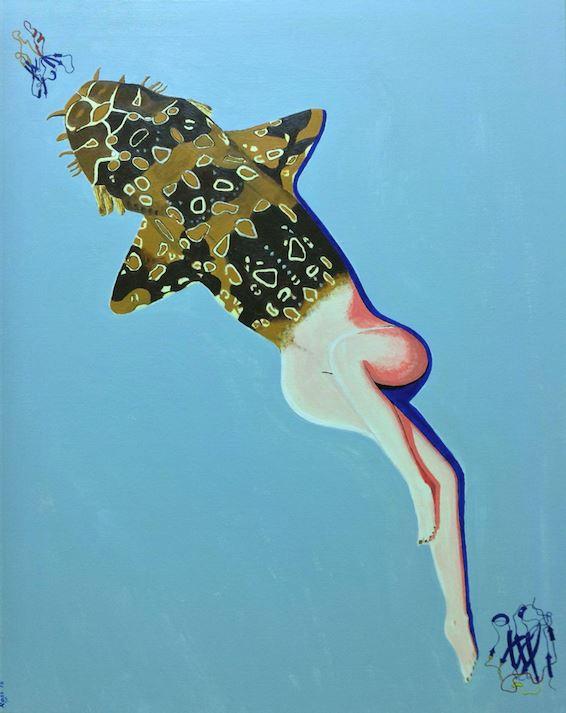 Taking artistic inspiration from shark antibodies , a University of Queensland scientist has combined his loves of art and science in a painting which he says parallels his research journey.
Taking artistic inspiration from shark antibodies , a University of Queensland scientist has combined his loves of art and science in a painting which he says parallels his research journey.
School of Chemistry and Molecular Biosciences researcher Professor Barnard, who is Director of UQ’s Biotechnology Program, created a chimera (half-human, half animal) - painting a shark-human figure, which has been published in international journal Clinical Chemistry (DOI: 10.1373/clinchem.2017.280255 ).
“This painting was inspired by my work on shark single-chain antibodies in the Wobbegong shark, with postdoctoral fellow Katleen Braet (from the University of Ghent), at UQ’s Moreton Bay Research Station,” he said.
“Initially, I intended to paint a complete image of the Wobbegong shark, but during painting, the subject metamorphosed into a chimeric creature, reflecting my research.”
“These antibodies have helped us identify new antigens on dendritic cells, which are messengers between the innate and adaptive immune systems, and to detect antigens on breast cancer cells.
“Some of the shark antigen-binding molecules have subsequently been engineered into a human immunoglobulin framework, producing a chimeric molecule that contains sequences from different genes and species.”
Professor Barnard, who drew obsessively as a youngster, and won his first art prize while in primary school, became a scientist as a career, but his interest in art has continued throughout his life. He has another of his paintings “in press”, due to appear later in 2018.
”My art and science naturally intersected as both were intensely creative and frustrating processes, although many scientists and artists didn’t recognise the unity of their creative enterprise,“ he said.
“People and their creative works don’t fit neatly into categories or expectations.”



